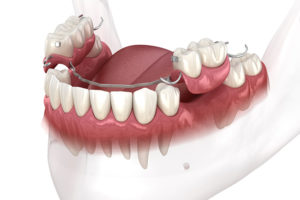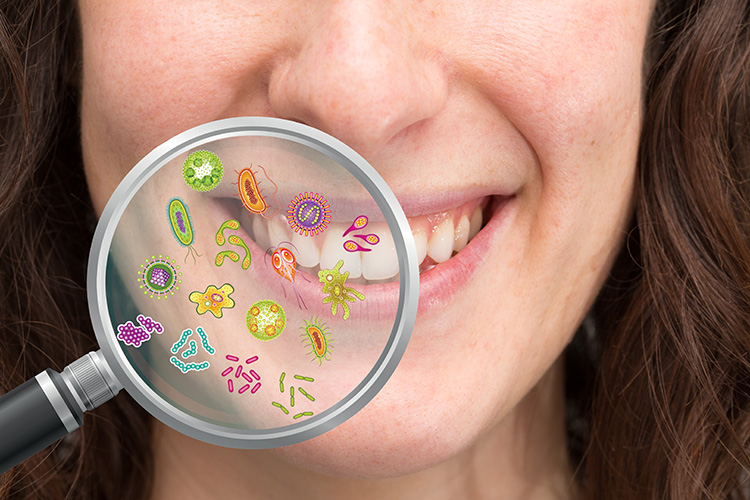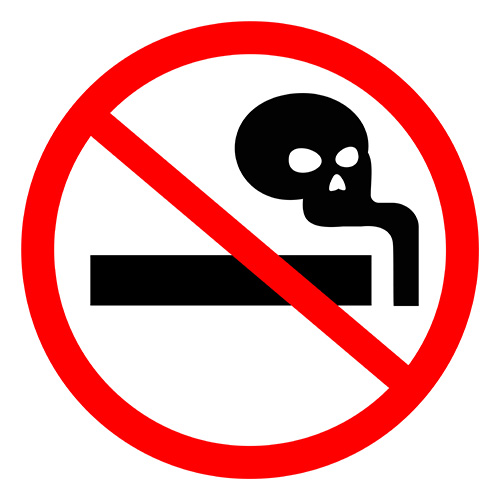Everything You Need to Know About Dental Flippers
 Dental Flippers
Dental Flippers
Losing a tooth is never a pleasant experience. Not only does it make it difficult to eat, but it also makes you withhold your smile due to the gap. Fortunately, there are many ways to fill the gaps in your teeth.
Alternatives for your missing tooth can be permanent or semi-permanent, depending on your age and dental needs. They can help you speak clearly, eat comfortably, smile confidently and improve your overall health.
One of the least invasive methods is to use the flipper tooth, otherwise called a removable partial denture or a flipper denture. We walk you through what you need to know about dental flippers, their benefits, drawbacks, maintenance, comparison with other prosthetic tooth options, and much more.
Here are the main points of interest we will discuss:
- What Are Dental Flippers?
- How Do I Know if a Flipper Tooth is Right for Me?
- How Long After Tooth Extraction Can I Wear a Flipper?
- Benefits of Dental Flippers
- Drawbacks to Dental Flippers
- How Do I Take Care of a Flipper Tooth?
- Is There an Alternative for Dental Flippers?
- How Much Does a Dental Flipper Cost?
- Conclusion
What Are Dental Flippers?
A flipper tooth is a removable retainer that generally sits on the lower jaw or the top of the roof of the mouth and has one or more prosthetic teeth attached to it. Also called acrylic partial dentures, they fill in the gaps in your smile.
They are a temporary yet attractive prosthetic tooth option for a permanent replacement that you can get through your dentist.
They give the appearance of a flawless smile even if you have lost teeth due to sickness or injury. The dentist first takes an impression of your mouth on soft material. It is then sent to a dental laboratory, where a custom flipper tooth is designed to fill in any gaps.
What Is a Flipper Tooth Made Of?
The flipper tooth is made of acrylic dental-grade resin that matches the color of your gums. The structure has metal clasps that attach to the surrounding natural teeth on either side of the missing teeth. They can easily be removed at night and cleaned with toothpaste or soaked in the denture cleaning solution.
How Long Can You Wear a Dental Flipper?
Dental flippers are generally a temporary replacement for your missing tooth until your gums heal enough for your implant. After that, you can use them for a long term only when your dentist instructs you. However, some may prefer to wear it permanently due to its low cost and lightweight, not to mention that they are easy to adjust.
In the case of minors missing teeth, they wear dental flippers until they are old enough to get an implant.
In either case, you need to care for your dental flipper properly to prevent breakage or damage. Clean the flipper every day to remove the plaque and food particles. This helps protect the teeth and the gums as well.
Can I Sleep with a Flipper Tooth in My Mouth?
A flipper tooth is a temporary situation and should be treated as such. If worn day and night, they exert constant pressure on the tissues under the flipper.
As a consequence, patients could develop receding gums and bone deterioration as well. Wearing a dental flipper all day could also trigger a fungal infection in the gums. Since it is painless, the infection is known.
It is crucial to remove the flippers at night, allowing the gums to breathe. Hence dentists recommend removing them at night for at least 8 hours.
Can I Eat with a Flipper Tooth?
The best part of using a flipper tooth is that you can eat with them and chew much easier. However, you should not exert any pressure since it is very fragile.
- Start with relatively soft foods; cut into small pieces and slowly chew them.
- Take small bites of your food and chew food with both sides of your mouth simultaneously.
- Avoid hard foods like raw vegetables until after the adjustment period.
- Do not pull food from the fork using the front flipper tooth.
How Do You Talk with a Dental Flipper?
Like eating, talking can also be difficult with a flipper tooth. It can be hard at first, but you can adjust to talking with a flipper with training—for example, practice speaking in front of a mirror or with a partner. Or you can call customer service, and you’ll be able to measure how much others understand you. Be prepared to have your dental flipper flying in the beginning. It takes to some time and practice to get used to it.
How Many Teeth Can You Put on a Flipper?
A flipper typically holds one or more teeth and holds on to surrounding teeth for support. Keep in mind that they are temporary and acts as a filler for a gap in the tooth line.
How Do I Know if a Flipper Tooth is Right for Me?
A flipper tooth is used for a short period of time in the place of one missing tooth when you are waiting for a permanent tooth replacement solution like a fixed bridge or a dental implant.
They are generally used to replace the front teeth. Moreover, they are not suggested for long-term use since they can be uncomfortable and can sit loosely in your mouth.
However, there are exceptional cases when flippers are a permanent replacement for someone with missing teeth. For example, this can be the case if you are not a good candidate for dental implants or a fixed bridge.
How Long After Tooth Extraction Can I Wear a Flipper?
As a general rule, you should wait for 24 hours after surgery before wearing a tooth flipper. After that, however, you should consult with your dentist and follow his directions. This information doesn’t replace medical advice in any way.
Benefits of Dental Flippers
 Flipper tooth can be pretty beneficial when compared to the other options out there.
Flipper tooth can be pretty beneficial when compared to the other options out there.
- Affordable when compared to other denture alternatives. A single tooth flipper is about 25% cheaper than a dental implant.
- Easy to fabricate and can be created by your dentist quite quickly. Since they are easier to make, you get them in a day or two.
- Require fewer visits to the dentist compared to a permanent partial denture.
- Has the appearance of a natural tooth. It fits in the gap formed by missing teeth and gives you your smile back.
- It prevents the surrounding teeth from shifting into the gap created by missing teeth and stabilizes your existing teeth.
- Easy to wear, remove or replace.
- Makes it easier to eat, chew or speak.
Drawbacks to Dental Flippers
While a dental flipper has many benefits, they also have a few drawbacks:
- Flipper tooth is made of cheap materials and is hence less durable when compared to dentures.
- Flippers can cause significant oral infections when not cleaned properly.
- Can be uncomfortable and challenging to adjust to in the beginning. They can also cause pain in some patients.
- Harmful to dental health if you do not clean them properly. You run the risk of gum disease, tooth decay, and gum recession.
- Flipper tooth covers the gums and prevents the flow of saliva to the region. Without saliva, the gums may recede.
- Even though the flipper tooth is molded to fit your existing teeth properly, it can loosen over the years.
- The metal clasps holding the teeth can sometimes be challenging to hide, making it evident that you are missing one or more teeth.
How Do I Take Care of a Flipper Tooth?
Maintaining a flipper tooth is pretty straightforward if you stick with a regular maintenance schedule. You have to clean it every day just like you’d do with your retainer to remove plaque and food particles.
Avoid moving it around in your mouth with the tongue, as this can loosen the flipper. Furthermore, you may also want to avoid dark-colored food and beverages, like cranberry juice, coffee, beets, etc., to prevent staining.
Finally, ensure that you maintain your oral health diligently. The existing teeth and gums are healthy can reduce the risk of tooth decay, gum disease, tooth sensitivity, etc. Also, visit your dentist twice a year for checkups.
How Do I Remove My Dental Flipper?
Rinse your mouth with warm water or mouth rinse to loosen the flipper tooth. To remove it from the jaw, hold the tooth and disengage the clasps.
Next, firmly grasp the dental flipper teeth and pull them out. You can also wiggle it slightly to dislodge it but avoid twisting for any reason.
What’s the Best Way to Clean Dental Flippers?
You can clean your flipper tooth with a soft-bristle toothbrush, warm water, and mild soap or dishwashing liquid. Rinse thoroughly after washing it before popping it in your mouth. Do not use toothpaste to clean your flipper as it can damage the material.
How Do You Store a Dental Flipper?
Ensure that your flipper tooth doesn’t dry out when you are not using it. Doing so makes them brittle and prone to breaking. Moreover, it would be uncomfortable to wear. Instead, keep them moist by soaking them in a denture cleaner or water when you remove them. With water, make sure it is not too hot as it can cause the material to warp.
Is There an Alternative for Dental Flippers?
The flipper tooth is not your only option when it comes to missing one or more teeth. However, they are the cheapest of all.
Temporary Solution
Apart from flippers, there are more temporary solutions that last longer and are more economical than permanent solutions. However, all these are more expensive than a flipper tooth.
Fixed Partial Dentures – These are partial dentures that attach to the adjacent teeth. However, they are only viable if you have healthy remaining teeth, roots, or implants to attach the prosthetic tooth to.
Snap-on-Smile – They are customized partial dentures that fit right over your teeth and gums without covering the palate. They are painless, cosmetic, non-invasive, and easily removable.
Permanent Solution
There is no doubt about permanent solutions lasting longer than a flipper tooth. However, they are pretty expensive.
Dental Bridges: They are prosthetic teeth attached directly to the existing teeth with bonds, cement, and crowns.
Dental Implant: Dental implants are not anchored to adjacent teeth for support. They include a post surgically implanted in the jawbone that acts as the tooth root to hold the prosthetic tooth in place. Furthermore, they look and function like natural teeth.
How Much Does a Dental Flipper Cost?
A dental flipper is one of the most affordable false teeth options out there. Flipper teeth typically cost between $300-$500. However, the cost is dependent on the number of teeth you replace using the flipper and the materials used. Moreover, you may also incur additional charges for periodic adjustments and have the flipper tooth repaired.
Conclusion
A flipper tooth is a cost-effective, temporary prosthetic tooth replacement. It creates the appearance of a full smile, even if you’ve lost one or more teeth due to injury, removal, or decay. Oral surgeons also use them as a stop-gap measure until your gums heal enough for a permanent solution.
Once the wound caused by the missing teeth has healed, the dentist fixes permanent teeth options like a dental bridge or a fixed bridge. However, there are times where flipper dentures may be a permanent option. In such a case, the dentist may opt for a more reliable denture than a flipper.
 Contact your dental professional to help determine if a dental flipper is the proper treatment for your situation. One of the best dentists in the Tucson area is Dr. Dalesandro, who has the experience you want to help you with dental flippers, dentures or any other dental prosthetic; call today for your next appointment.
Contact your dental professional to help determine if a dental flipper is the proper treatment for your situation. One of the best dentists in the Tucson area is Dr. Dalesandro, who has the experience you want to help you with dental flippers, dentures or any other dental prosthetic; call today for your next appointment.
 Periodontal disease affects about 20%-50%
Periodontal disease affects about 20%-50% Causes
Causes With proper treatment and good oral health practices, periodontitis is manageable.
With proper treatment and good oral health practices, periodontitis is manageable.